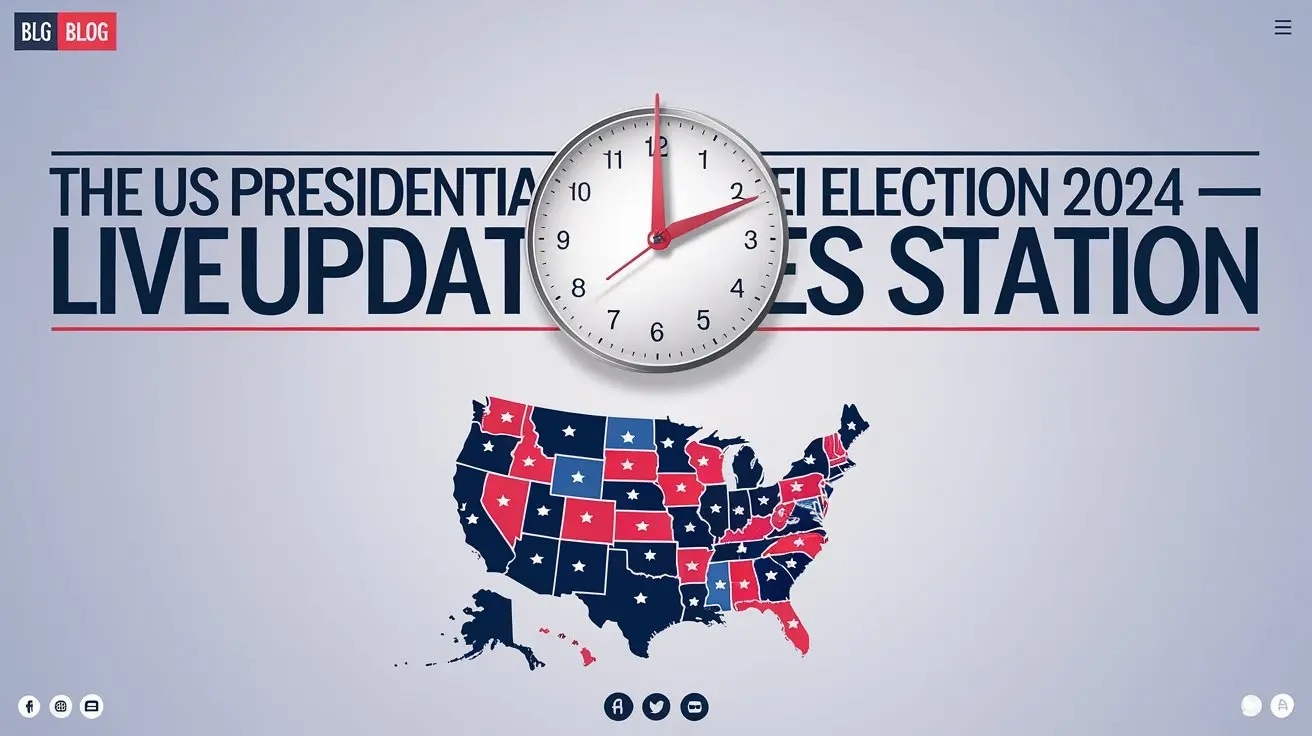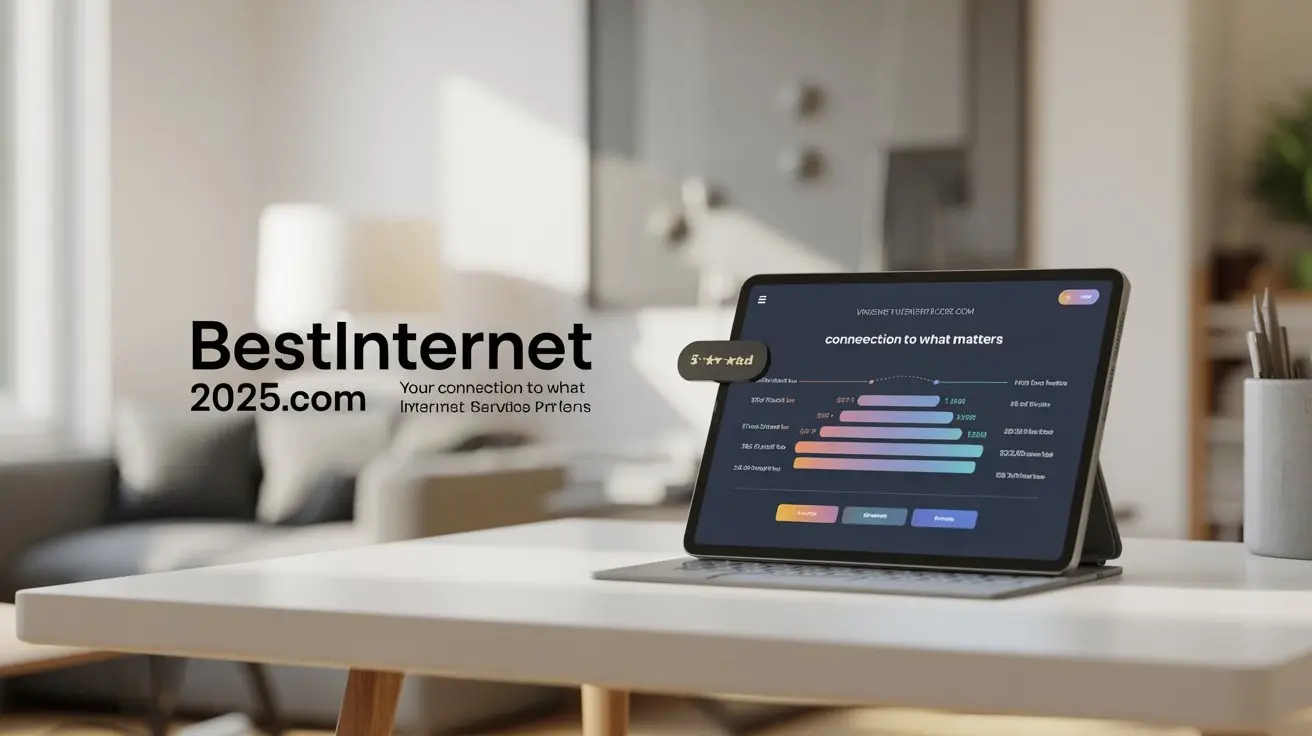The US presidential election 2024 – Live Updates Station

Stay informed with the most comprehensive and up-to-the-minute coverage of the US Presidential Election 2024. This live updates station provides critical insights, candidate analyses, polling data, and expert commentary, ensuring you have all the information needed to understand this pivotal electoral event as it unfolds.
The US Presidential Election 2024: A Comprehensive Overview
The US Presidential Election of 2024 stands as a critical juncture for the nation, shaping its domestic and foreign policy for years to come. This election cycle, marked by intense debate, evolving political landscapes, and significant voter engagement, will determine the next leader of the free world. As a live updates station, our primary objective is to provide an unvarnished, comprehensive, and continuously updated source of information. We aim to cut through the noise, offering clarity on candidate stances, campaign strategies, polling trends, and the broader socio-political context that influences voter decisions. Understanding the nuances of this election is paramount, and our platform is designed to empower citizens with the knowledge they need to make informed judgments. This includes detailed breakdowns of electoral college dynamics, the influence of swing states, and the underlying economic and social factors at play. Our commitment is to deliver real-time, accurate reporting from the ground, synthesizing information from diverse sources to present a holistic picture of the race.
Key Dates and Milestones in the 2024 Election Cycle
Navigating the US Presidential Election requires understanding its intricate timeline. The 2024 cycle, like its predecessors, is structured around a series of crucial dates and milestones that progressively narrow the field of candidates and build towards the general election. Staying abreast of these events is key to grasping the momentum and strategic shifts within campaigns.
The Nomination Process: Primaries and Caucuses
The journey to the presidency officially begins with the state-level primaries and caucuses. These contests, typically starting in early 2024, allow registered party members to cast ballots for their preferred candidate. The results from these early states, such as Iowa and New Hampshire, often carry disproportionate weight, shaping media narratives and candidate viability. States then proceed through a staggered schedule, with Super Tuesday in March being a pivotal moment where a large number of states hold their contests simultaneously, significantly influencing the delegate count.
Key Primary/Caucus Dates (Illustrative - actual dates confirmed closer to cycle):
- Early 2024: Iowa Caucuses, New Hampshire Primary
- March 2024: Super Tuesday – Numerous states vote
- Spring 2024: Remaining state primaries and caucuses
National Conventions
Following the conclusion of the primaries, both major parties hold their national conventions, typically in the summer months of 2024. These events serve as formal nominations for the presidential and vice-presidential candidates. Conventions are also crucial for party unity, fundraising, and generating enthusiasm among the base. They often feature keynote speeches from rising stars within the party and serve as a platform to officially launch the general election campaign.
The General Election Campaign
From the conventions through Election Day, the focus shifts to the general election. This period is characterized by extensive campaigning, including rallies, debates, and advertising. Key dates include the televised presidential debates, which offer candidates a national stage to present their vision and critique their opponents. The final weeks leading up to Election Day are often the most intense, with candidates making concentrated efforts in swing states.
Election Day
The culmination of the election cycle is Election Day, scheduled for the first Tuesday after the first Monday in November 2024. Millions of Americans cast their ballots, either in person or through early voting and mail-in ballots, depending on state laws. The results from this day determine the next President of the United States.
Post-Election Transition
Following Election Day, the winning candidate enters a transition period. This phase involves appointing cabinet members, developing policy initiatives, and preparing to take office. The official inauguration takes place on January 20, 2025, marking the peaceful transfer of power.
Major Candidates and Their Platforms
The 2024 US Presidential Election features a diverse array of candidates, each bringing unique experiences, ideologies, and policy proposals to the forefront. Understanding their platforms is essential for voters to make informed decisions. While the field can evolve, we focus on the leading figures who have emerged or are anticipated to contend for the nomination and the presidency.
Incumbent and Potential Challengers
The incumbent president, if seeking re-election, often starts with name recognition and the advantages of the office. However, they also face scrutiny over their record. Challengers, whether from the opposing party or within the incumbent's own party (in primary challenges), aim to capitalize on public sentiment, policy critiques, and offer a fresh vision.
Example Candidate Archetypes and Potential Platform Focuses:
- The Incumbent (e.g., President Joe Biden): Platform likely emphasizes continuity, achievements in areas like infrastructure, job growth, and international alliances. Focus on stability and experienced leadership.
- The Established Party Leader (e.g., a prominent former governor or senator): Platform might focus on specific policy areas where they have expertise, such as economic reform, healthcare, or national security. Aims to present a clear alternative to the incumbent.
- The Outsider/Populist Candidate: Platform often centers on disruption, challenging the status quo, and appealing directly to a specific segment of the electorate. May focus on issues like immigration, trade, or cultural grievances.
- The Progressive Candidate: Platform typically advocates for significant social and economic change, such as expanded social programs, climate action, and criminal justice reform.
Key Policy Areas and Candidate Stances
Candidates differentiate themselves through their proposed policies on critical issues. Here's a look at some of the most prominent areas and how candidates might approach them:
Economic Policy
Candidate A (e.g., Moderate): Might propose tax cuts for middle-income families, investments in infrastructure, and targeted regulatory relief for businesses. Focus on job creation and fiscal responsibility.
Candidate B (e.g., Progressive): Could advocate for increased corporate taxes, wealth taxes, universal basic income, and significant investments in green energy and social safety nets. Emphasis on income inequality reduction.
Candidate C (e.g., Fiscal Conservative): Likely to push for broad tax reductions across the board, deregulation, and significant cuts to government spending. Focus on free-market principles and reducing national debt.
Healthcare
Candidate A: May support strengthening the Affordable Care Act (ACA), expanding subsidies, and negotiating prescription drug prices. Focus on expanding access and affordability within the current framework.
Candidate B: Could champion a Medicare for All system, a single-payer healthcare model. Emphasis on healthcare as a human right and eliminating private insurance involvement.
Candidate C: Might propose market-based reforms, such as health savings accounts, allowing insurance sales across state lines, and repealing or replacing the ACA with a system that emphasizes individual choice and competition.
Climate Change and Energy
Candidate A: Likely to support rejoining international climate agreements, investing in renewable energy research and development, and implementing moderate carbon regulations. Balance between environmental protection and economic growth.
Candidate B: Would probably advocate for aggressive climate action, including a Green New Deal-style initiative, rapid transition away from fossil fuels, and significant investments in renewable energy infrastructure. Focus on climate justice.
Candidate C: May express skepticism about the severity of climate change or the efficacy of government intervention. Might prioritize domestic energy production, including fossil fuels, and advocate for deregulation of the energy sector.
Foreign Policy and National Security
Candidate A: Likely to emphasize traditional alliances, diplomatic solutions, and a strong but measured military presence. Focus on multilateralism and international cooperation.
Candidate B: Could advocate for a more interventionist approach, prioritizing national interests and potentially challenging existing international agreements. Might favor a strong military and assertive foreign policy.
Candidate C: May propose a more isolationist or non-interventionist stance, focusing on domestic issues and reducing foreign entanglements. Emphasis on trade deals that benefit the US directly.
This overview provides a snapshot. Detailed policy papers and speeches from candidates will offer more granular insights as the election progresses. We will continuously update this section with the latest policy proposals and candidate statements.
Navigating the Primaries and Caucuses
The primary and caucus season is the crucible where presidential hopefuls prove their mettle and the electorate begins to coalesce around party nominees. This complex, state-by-state process is a critical determinant of who will ultimately appear on the general election ballot. Understanding its mechanics is vital for grasping the dynamics of the 2024 election.
Types of Primaries and Caucuses
States employ different methods for selecting delegates. These variations significantly impact voter turnout and the nature of the contests:
- Closed Primaries: Only registered members of a specific political party can vote in that party's primary. This ensures that only committed party voters participate in selecting the nominee.
- Open Primaries: Voters do not need to declare a party affiliation to vote in a primary. They can choose which party's ballot to take on Election Day. This can lead to higher turnout but also allows for crossover voting.
- Semi-Closed/Semi-Open Primaries: These are hybrid systems. For example, registered party members vote in their party's primary, while unaffiliated voters can choose one party's ballot.
- Caucuses: These are local meetings where party members gather to discuss candidates and publicly declare their support. They are often more time-consuming and require a greater commitment from participants than primaries. Caucuses can involve complex organizational structures and delegate selection processes.
The Role of Early States
The states that hold their contests first—typically Iowa (caucus) and New Hampshire (primary)—are often given outsized importance. Success in these early states can provide crucial momentum, media attention, and fundraising boosts, propelling candidates forward. Conversely, poor performance can signal the end of a campaign for many hopefuls. The order of these early states is a subject of constant debate and can be influenced by party rules and state legislation.
Delegate Allocation
Candidates earn delegates based on their performance in primaries and caucuses. These delegates then pledge to support a particular candidate at the national convention. The process of delegate allocation varies by state and party:
- Proportional Allocation: Most Democratic states and many Republican states allocate delegates proportionally. Candidates who meet a certain threshold (e.g., 15% of the vote) receive delegates in proportion to their vote share.
- Winner-Take-All: Some Republican state parties award all their delegates to the candidate who wins the popular vote in that state. This system can lead to rapid shifts in delegate counts.
- District-Level Allocation: Delegates may be awarded based on results within specific congressional districts, with additional delegates awarded at the state level.
Impact on the Nomination Race
The primary and caucus season is a dynamic process. Candidates must adapt their strategies based on the rules and demographics of each state. A candidate who performs well in early, ideologically diverse states might have a different path to nomination than one who focuses on later, winner-take-all contests. The cumulative effect of delegate wins is what ultimately determines the nominee. By the time the national conventions arrive in the summer of 2024, one candidate will typically have secured a majority of the pledged delegates, effectively becoming the party's standard-bearer.
The General Election Campaign Trail
Once the nominees are formally selected at their respective national conventions, the focus shifts dramatically to the general election. This phase is a direct contest between the Republican and Democratic (and potentially third-party) candidates, culminating on Election Day. The campaign trail becomes a battleground for hearts and minds across the nation.
Swing States: The Electoral Battlegrounds
The US operates under the Electoral College system, meaning the winner of the popular vote nationwide does not automatically win the presidency. Instead, the election is decided by winning a majority of electoral votes (at least 270 out of 538). This system places immense importance on a handful of "swing states" or "battleground states." These are states where the outcome is not reliably Republican or Democratic and can shift from one election to the next. Candidates concentrate their resources—time, money, and advertising—on these crucial states, as winning them is often the most efficient path to 270 electoral votes.
Examples of Historically Competitive Swing States:
- Pennsylvania
- Michigan
- Wisconsin
- Arizona
- Georgia
- Nevada
- North Carolina
The specific list of swing states can evolve, influenced by demographic shifts, economic conditions, and the candidates themselves. Our live updates will closely monitor campaign activity and polling in these critical regions.
Presidential Debates
The presidential debates are highly anticipated events that provide a unique platform for candidates to directly address the nation. These televised showdowns allow voters to compare candidates side-by-side on their policy positions, leadership styles, and ability to handle pressure. Typically, there are several debates between the presidential nominees and at least one vice-presidential debate. The performance of candidates in these debates can significantly influence public opinion and poll numbers, sometimes shifting the trajectory of the race.
Campaign Advertising and Media Strategy
Both campaigns will deploy massive advertising budgets across television, radio, digital platforms, and social media. These ads are designed to persuade undecided voters, mobilize supporters, and attack opponents. Understanding the messaging and targeting strategies behind these campaigns offers insight into what the campaigns believe are the most effective ways to win votes. Our coverage will analyze key ad campaigns and their potential impact.
Grassroots Mobilization and Voter Turnout
Beyond the high-profile events and advertising, the general election hinges on grassroots organizing and voter turnout. Campaigns work to register voters, encourage early voting, and ensure their supporters turn out on Election Day. This involves phone banking, door-to-door canvassing, and get-out-the-vote (GOTV) efforts. The effectiveness of these operations can be a decisive factor, especially in close races.
Polling Data and Electoral Projections
Polling data serves as a vital barometer of public opinion throughout the election cycle. While not always perfectly predictive, polls offer crucial insights into candidate favorability, voter intentions, and the overall direction of the race. As a live updates station, we will provide continuous analysis of the latest polling numbers and electoral projections.
Types of Polls and Methodologies
It's important to understand the different types of polls and their methodologies:
- National Polls: Measure the overall sentiment of voters across the country. Useful for understanding national trends but less critical than state-level polls due to the Electoral College.
- State Polls: Focus on specific states, particularly swing states. These are often the most predictive of electoral outcomes.
- Primary Polls: Track support for candidates within a specific party during the nomination phase.
- General Election Polls: Measure head-to-head matchups between the presumed nominees.
- Tracking Polls: Conducted daily or very frequently, these polls show short-term shifts in voter sentiment.
- Methodologies: Polls can be conducted via live telephone interviews, automated calls (IVR), online surveys, or text messages. The sample size, margin of error, and the demographics of the surveyed population are critical factors in assessing a poll's reliability.
Interpreting Polling Data
Several factors must be considered when interpreting poll results:
- Margin of Error: Every poll has a margin of error, indicating the range within which the true result is likely to fall. A lead within the margin of error is not statistically significant.
- Sample Size: Larger sample sizes generally lead to more reliable results.
- Likely Voter Models: Pollsters often use models to determine who is "likely" to vote, which can be subjective and influence outcomes.
- Timing: Polls reflect opinion at a specific moment in time. Events can cause rapid shifts.
- Demographics: Understanding the demographic breakdown of a poll's sample is crucial for interpreting its findings.
Electoral Projections and Models
Beyond individual polls, various organizations create electoral projection models. These models aggregate data from multiple polls, historical election results, and demographic information to forecast the most likely outcome of the election. They often provide probabilities for each candidate winning individual states and the overall election. Our platform will highlight these projections and explain the methodologies behind them.
Example of a Projection Metric: Electoral College Map
A common way to visualize projections is through an Electoral College map, where states are colored based on the projected winner. Different colors might represent "Solid Republican," "Lean Republican," "Toss-up," "Lean Democrat," and "Solid Democrat." Our live updates will feature dynamic versions of these maps as projections evolve.
We will continuously monitor and report on the latest polling averages, key state trends, and expert electoral projections to provide a clear picture of the race's dynamics.
Defining Issues of the 2024 Election
Every presidential election is shaped by a set of core issues that resonate most deeply with the electorate. For the US Presidential Election 2024, several critical themes are expected to dominate the discourse and influence voter decisions. Understanding these issues is fundamental to comprehending the candidates' strategies and the electorate's concerns.
Economic Stability and Inflation
Following periods of economic volatility, concerns about inflation, job security, and the overall health of the US economy are paramount. Voters will be looking for candidates who present credible plans to manage inflation, foster job growth, and ensure economic prosperity. Debates will likely center on fiscal policy, taxation, government spending, and the impact of global economic events on American households.
Data Point (2025 Projection): Analysts project continued focus on supply chain resilience and domestic manufacturing incentives as key economic drivers. Inflation rates are anticipated to stabilize, but consumer confidence will remain a critical indicator.
Healthcare Access and Affordability
Healthcare remains a perennial concern for American voters. Issues such as the cost of insurance premiums, prescription drug prices, access to quality care, and the future of programs like Medicare and Medicaid will be central to the debate. Candidates will present differing visions for healthcare reform, ranging from expanding existing programs to market-based solutions.
Climate Change and Environmental Policy
The urgency of climate change continues to drive policy discussions. Voters will assess candidates' commitments to renewable energy, environmental regulations, and international climate agreements. The debate will likely involve balancing environmental protection with economic considerations and energy independence. Extreme weather events, increasingly prevalent, will likely amplify these concerns.
Immigration and Border Security
Immigration policy, including border security, pathways to citizenship, and the treatment of asylum seekers, is a highly charged and divisive issue. Candidates will offer contrasting approaches, reflecting different philosophies on national sovereignty, humanitarian concerns, and economic impacts. The ongoing situation at the US-Mexico border will undoubtedly be a focal point.
Foreign Policy and National Security
In an increasingly complex global landscape, foreign policy and national security are critical concerns. Voters will evaluate candidates' approaches to international alliances, trade relations, military readiness, and responses to geopolitical crises. The ongoing conflicts and shifts in global power dynamics will shape these discussions.
Social Issues and Cultural Divides
Social issues, such as reproductive rights, LGBTQ+ rights, gun control, and education policy, often mobilize specific segments of the electorate and can be decisive in close races. These issues tap into deeply held values and beliefs, contributing to the cultural polarization seen in contemporary American politics.
Technology and Cybersecurity
Emerging issues related to technology, such as artificial intelligence regulation, data privacy, and cybersecurity threats, are gaining prominence. Candidates will need to articulate their strategies for navigating these rapidly evolving domains and protecting national interests in the digital age.
Our live updates will provide in-depth analysis of how these issues are being discussed on the campaign trail, how candidates are proposing to address them, and how they are impacting voter sentiment.
Election Night: Real-Time Updates and Analysis
Election Night is the culmination of months, even years, of campaigning. It's a period of intense anticipation, where the nation watches as results pour in from across the country. As your live updates station, we are dedicated to providing comprehensive, real-time coverage of this pivotal event.
The Role of Early Returns
As polls close in various states, the first results will begin to be reported. These early returns, often from precincts that vote earlier or have faster reporting mechanisms, can offer initial indications of trends. However, it's crucial to remember that these are just preliminary numbers. The composition of early reporting precincts can sometimes skew results, and it's vital to wait for a significant portion of the vote to be counted before drawing firm conclusions.
Projecting Winners and Key States
News organizations and projection firms use sophisticated models to project winners in each state. These projections are based on a combination of early vote counts, exit poll data, and historical voting patterns. Our live updates will clearly distinguish between reported vote counts and projections, explaining the criteria used for each projection. We will pay particular attention to the electoral vote count, tracking the path to 270 electoral votes.
Tracking the Electoral College Tally
The Electoral College is the ultimate arbiter of the presidential election. Our coverage will feature a constantly updated Electoral College map, showing the projected wins for each candidate and the running total. We will highlight key swing states as they are called, explaining the significance of each state's outcome.
Analysis and Expert Commentary
Beyond just reporting numbers, our Election Night coverage will feature in-depth analysis from political strategists, pollsters, and journalists. They will provide context for the results, explain the factors driving voter behavior in different regions, and offer insights into the implications of the projected outcome. This expert commentary will help you understand not just *what* is happening, but *why*.
Understanding Vote Counting and Potential Delays
Depending on state laws regarding mail-in ballots and early voting, vote counting can sometimes extend beyond Election Night. Our coverage will keep you informed about the status of vote tabulation in all states, explaining any potential delays and what factors might be contributing to them. Transparency about the counting process is essential for public confidence.
Live Updates Format
Our live updates will be presented in a clear, organized format:
- Real-time Vote Counts: Constantly updated numbers for each state.
- Projected Winners: Clear indicators of which candidate is projected to win each state.
- Electoral College Tracker: An interactive map and running tally.
- Key State Analysis: In-depth looks at the pivotal swing states.
- Expert Insights: Commentary from leading political analysts.
- Breaking News Alerts: Notifications for major developments, such as states being called or significant shifts in vote totals.
Our goal is to be your most trusted source for accurate, timely, and comprehensive Election Night coverage.
Post-Election Developments and Transition
The conclusion of Election Day is not the end of the electoral process. The period following the election is critical, involving the certification of results, potential recounts, and the commencement of the presidential transition. Our live updates station will continue to provide coverage through these crucial post-election phases.
Vote Certification and Recounts
After Election Day, each state must officially certify its election results. This process involves verifying the accuracy of the vote count and ensuring that all eligible ballots have been counted. In some states, if the margin between candidates is very narrow, a mandatory recount may be triggered. Candidates also have the option to request a recount in certain circumstances. Our coverage will track the certification timelines and any developments related to recounts, providing transparent reporting on the legal and procedural aspects of these processes.
Legal Challenges and Disputes
Occasionally, election results can be subject to legal challenges. These disputes may arise from allegations of voting irregularities, procedural issues, or other concerns. Our platform will report on any significant legal actions related to the election outcome, providing context and explaining the legal frameworks governing such challenges. We will strive to present information objectively, distinguishing between factual allegations and partisan claims.
The Presidential Transition
Once the election results are finalized and a winner is declared, the transition to a new administration begins. This period, typically spanning from the election in November to the inauguration in January, is a complex logistical and political undertaking. The transition team for the President-elect works to:
- Appoint cabinet secretaries and key White House staff.
- Develop policy priorities for the new administration.
- Liaise with outgoing administration officials to ensure a smooth handover of government operations.
- Receive intelligence briefings and begin national security planning.
Our coverage will offer insights into the composition of the transition team, key appointments, and the policy agenda being shaped. We will also highlight the cooperation (or lack thereof) between the outgoing and incoming administrations, as this is a critical indicator of governmental stability.
Inauguration Day
The formal transfer of power culminates on Inauguration Day, January 20, 2025. The President-elect is sworn into office, marking the official start of their term. This day is a significant constitutional event, symbolizing the peaceful transition of power that is a hallmark of American democracy. We will provide updates on the inauguration ceremony and the President's inaugural address, which typically outlines the vision and priorities for the coming term.
Our commitment is to provide continuous, reliable information throughout the entire election cycle, from the initial primaries to the final moments of the presidential transition.
Historical Context and Precedents
To fully appreciate the significance of the US Presidential Election 2024, it is essential to place it within its historical context. Understanding past elections, their outcomes, and the societal forces that shaped them provides valuable perspective on the current political landscape.
Past Presidential Elections and Their Impact
Each presidential election is a chapter in American history. Landmark elections, such as those of 1800 (the first peaceful transfer of power between parties), 1860 (leading to the Civil War), 1932 (the New Deal era), and 1980 (the Reagan revolution), have profoundly reshaped the nation's trajectory. Analyzing the issues, candidates, and voter alignments of these pivotal moments can illuminate recurring themes and patterns in American politics.
The Evolution of the Two-Party System
The US has largely operated under a two-party system for most of its history. However, the dominant parties and their platforms have evolved dramatically over time. The Republican Party, founded in the mid-19th century as an anti-slavery party, has seen its platform shift significantly. Similarly, the Democratic Party has undergone transformations, from its origins as a states' rights party to its modern identity as a champion of social and economic liberalism. Understanding these historical shifts helps explain the current ideological divisions.
The Role of the Electoral College
The Electoral College, established by the Founding Fathers, has been a source of debate since its inception. Its existence has led to instances where the popular vote winner did not win the presidency, such as in 1824, 1876, 1888, 2000, and 2016. Examining these outcomes and the historical arguments for and against the Electoral College provides crucial context for the 2024 election, especially in swing states.
Technological Advancements and Campaigning
The way campaigns are run has been revolutionized by technology. From the early days of printed pamphlets and stump speeches to the advent of radio, television, and now the internet and social media, each technological leap has altered how candidates communicate with voters and mobilize support. The 2024 election will undoubtedly see the continued influence of digital campaigning, data analytics, and online discourse.
Demographic Shifts and Voter Coalitions
The American electorate is constantly changing due to demographic shifts, including immigration, birth rates, and age distribution. Candidates must build coalitions of voters from different racial, ethnic, age, and socioeconomic groups to win. Examining how past candidates have successfully (or unsuccessfully) forged these coalitions offers insights into the challenges and opportunities facing candidates in 2024.
Lessons from Recent Elections
The outcomes and dynamics of recent presidential elections (e.g., 2016, 2020) offer direct lessons. Factors such as the impact of polarization, the rise of social media, the influence of economic anxiety, and the effectiveness of different campaign strategies are all relevant. Understanding what worked and what didn't in these more immediate historical events is crucial for analyzing the current race.
By drawing on this rich historical tapestry, we can better understand the forces at play in the 2024 election and anticipate potential outcomes. Our ongoing analysis will continue to reference historical precedents where relevant.
Expert Insights and Commentary
Beyond raw data and candidate statements, the US Presidential Election 2024 is best understood through the lens of informed analysis. Our platform is committed to providing you with commentary and insights from leading experts in political science, journalism, and public policy. This section is dedicated to bringing you a deeper understanding of the nuances and implications of the unfolding election.
Who Are Our Experts?
We collaborate with a diverse group of individuals who possess deep knowledge and experience in American politics. This includes:
- Political Scientists: Academics who study electoral behavior, party systems, and public opinion.
- Journalists and Pundits: Experienced reporters and commentators who cover politics for major media outlets.
- Former Campaign Strategists: Individuals who have worked on presidential campaigns and understand the intricacies of strategy and messaging.
- Policy Analysts: Experts focused on specific issue areas, such as economics, foreign policy, or healthcare.
This multidisciplinary approach ensures a well-rounded and comprehensive perspective.
Types of Commentary Provided
Our expert commentary will cover a range of topics:
- Election Analysis: In-depth breakdowns of polling trends, campaign strategies, and the impact of key events.
- Policy Deep Dives: Expert opinions on the feasibility and potential consequences of candidates' policy proposals.
- Historical Comparisons: Experts drawing parallels between the current election and past historical moments.
- Swing State Dynamics: Focused analysis on the electoral math and voter sentiment in critical battleground states.
- Debate Reviews: Immediate post-debate analysis of candidate performance and key takeaways.
- Long-Term Implications: Discussions on how the election outcome could shape the future of the US and its role in the world.
How We Ensure Objectivity and Balance
While our experts may have their own perspectives, we strive for balance and objectivity in our commentary. We aim to:
- Present a variety of viewpoints from across the political spectrum.
- Clearly distinguish between factual analysis and opinion.
- Attribute commentary to specific experts, allowing readers to understand the source of the analysis.
- Focus on evidence-based reasoning and rigorous analysis.
Staying Engaged with Expert Voices
We encourage you to engage with the expert insights provided. Consider these questions as you read:
- Does this analysis align with the data I've seen?
- What new perspectives does this expert offer?
- How does this commentary help me understand the motivations of candidates and voters?
By integrating expert commentary with our live data feeds and factual reporting, we aim to provide an unparalleled resource for understanding the complexities of the US Presidential Election 2024.
How to Stay Informed: Your Live Updates Station Guide
In the fast-paced environment of a presidential election, staying informed can feel overwhelming. Our live updates station is designed to be your central hub for accurate, timely, and comprehensive information. Here’s how you can best utilize our resources to stay on top of the US Presidential Election 2024.
Bookmark Our Page
The simplest way to ensure you don't miss any updates is to bookmark this page. As the election cycle progresses, we will be continuously updating content, adding new data, and refining our analysis. Having us bookmarked means you can return frequently for the latest developments.
Utilize the Table of Contents
The table of contents at the top of this page allows you to quickly navigate to specific sections of interest. Whether you want to check the latest polling data, review candidate platforms, or understand key issues, you can jump directly to the relevant information with a single click.
Follow Our Real-Time Updates
During key periods, such as primary nights, debate nights, and especially Election Night, we will be providing real-time updates. Look for indicators of live coverage, such as flashing alerts or specific sections dedicated to live reporting. These updates are designed to give you the most immediate information available.
Engage with Our Analysis
We don't just present data; we provide context and analysis. Take the time to read our expert insights, understand the historical precedents, and explore our deep dives into key issues. This analytical content is crucial for moving beyond headlines and grasping the deeper implications of the election.
Understand the Data We Present
We strive for clarity in presenting polling data, electoral projections, and statistics. Pay attention to the details: margins of error, sample sizes, and the methodologies used. Understanding these elements will help you critically evaluate the information and form your own informed opinions.
Share with Your Network
Knowledge is power, and sharing reliable information is a vital part of civic engagement. If you find our updates helpful, please share them with your friends, family, and colleagues. Help others stay informed by directing them to our comprehensive live updates station.
Provide Feedback
We are constantly working to improve our coverage. If you have suggestions for content, find any information that needs clarification, or have questions, please use any available feedback mechanisms. Your input helps us serve you better.
By following these simple steps, you can ensure you are well-equipped to navigate the complexities of the US Presidential Election 2024. Our mission is to be your most trusted, comprehensive, and accessible source of information throughout this critical electoral journey.
Conclusion:
The US Presidential Election 2024 is a pivotal moment, demanding informed and engaged citizens. This live updates station has provided a comprehensive overview, from the intricacies of the primaries to the final moments of the presidential transition. We've explored key dates, candidate platforms, defining issues, and the critical role of polling data. By understanding the historical context and leveraging expert insights, you are better equipped to navigate this complex electoral landscape. Our commitment remains to deliver accurate, real-time information, empowering you to make informed decisions. Stay vigilant, stay informed, and participate actively in shaping the future of the nation. Your engagement is vital to the democratic process.





